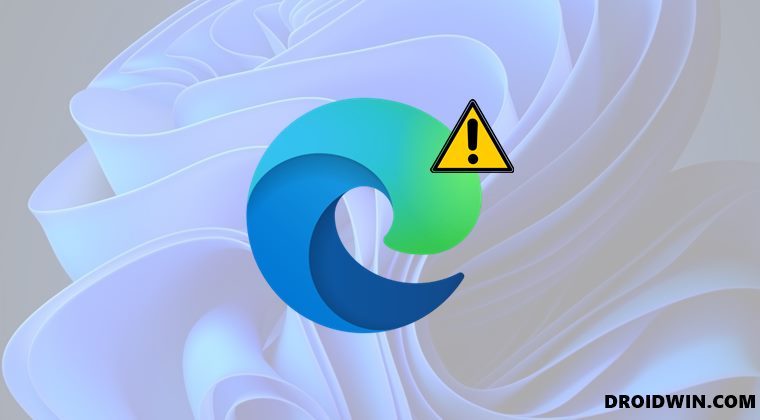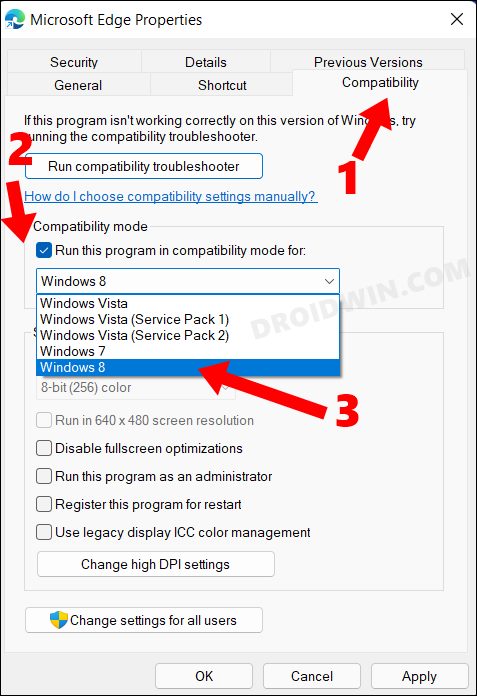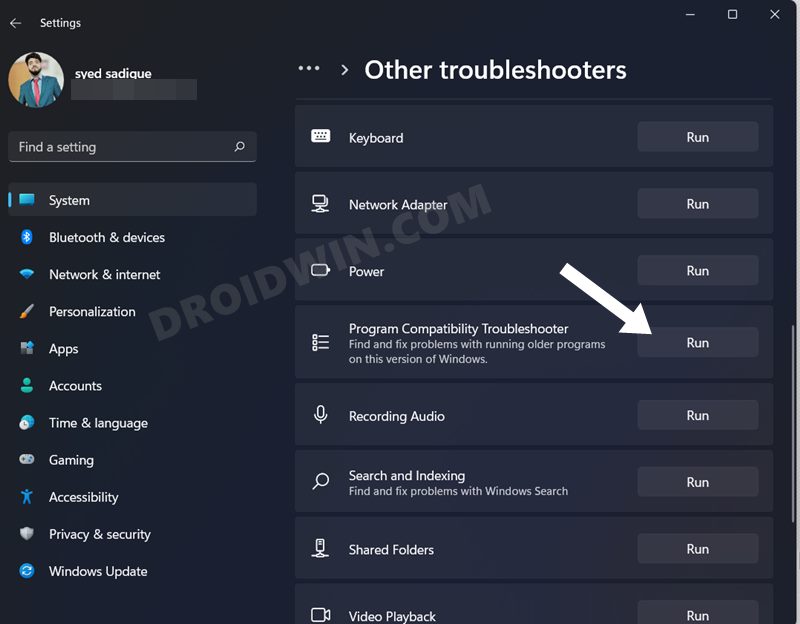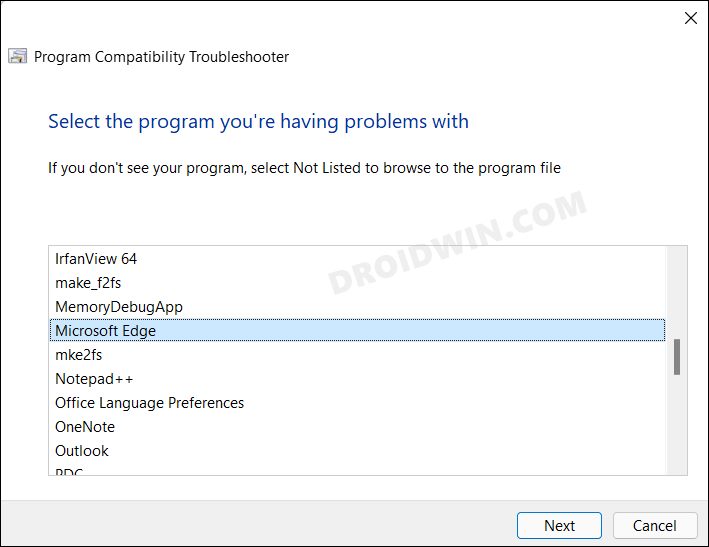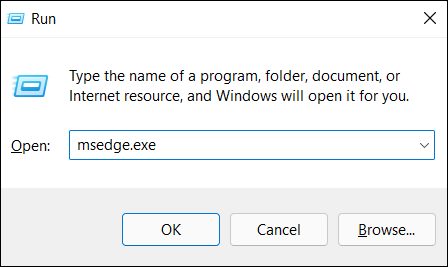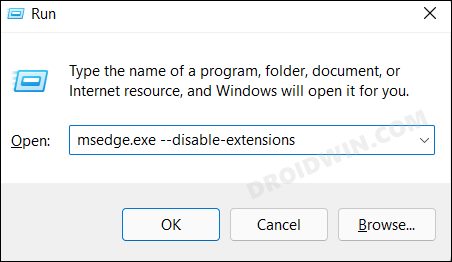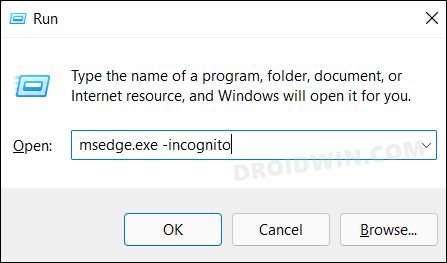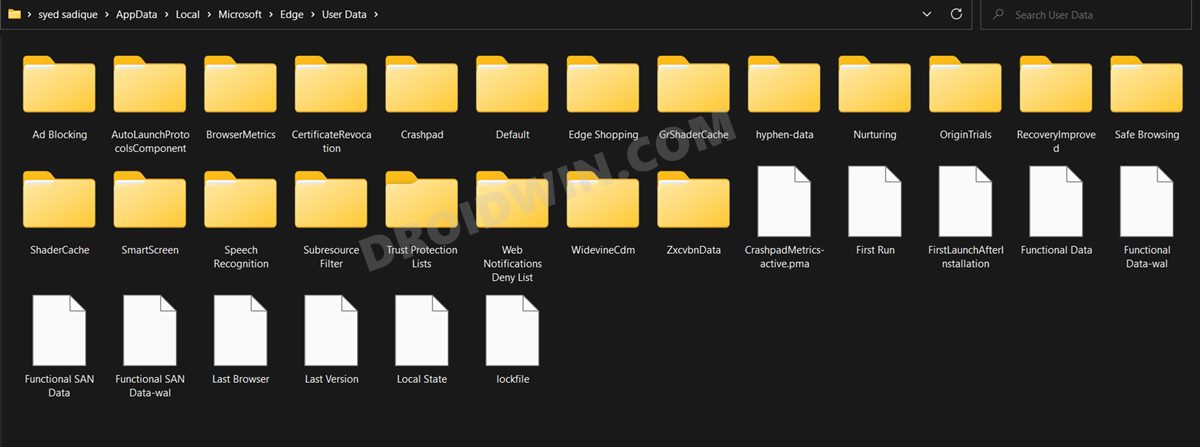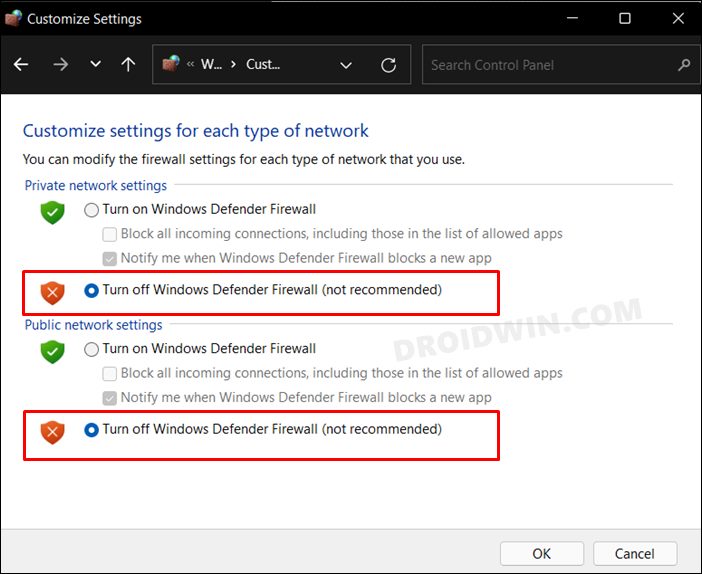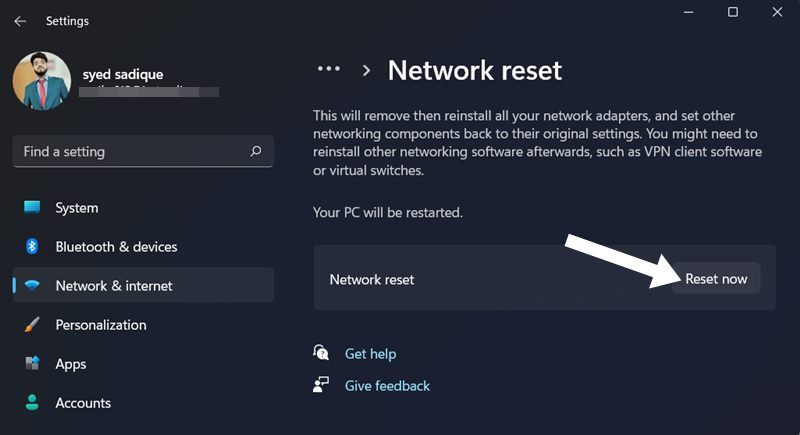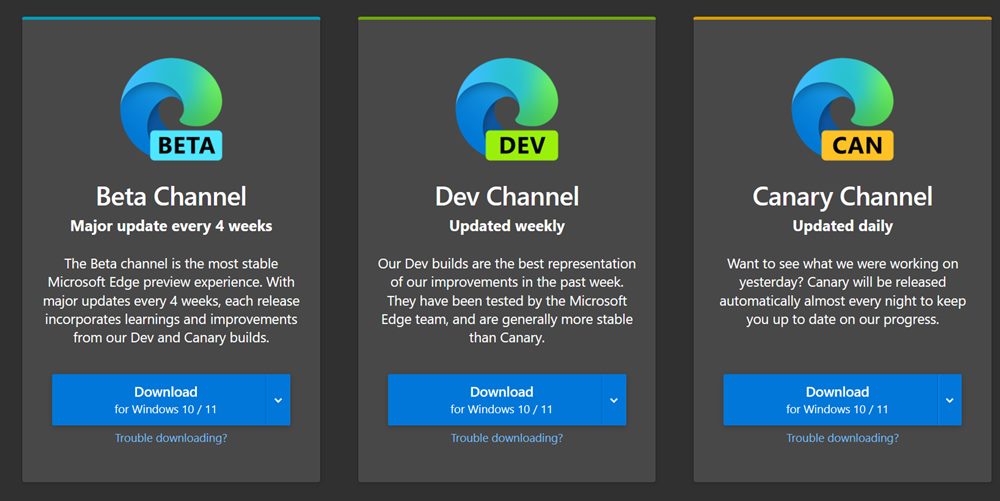Furthermore, now that this browser is deeply integrated into the new iteration of the OS build, you could expect much better-optimized performance from it. However, that doesn’t seem to be the case for many users. A slew of complaints is lined up across various forums where users have voiced their concerns that the browser isn’t working along the expected lines. For some, the issue is much more concerning as they aren’t even able to launch Edge in the first place. So keeping all these points in mind, this guide will make you aware of various methods that shall help you fix the Microsoft Edge not working issue on your Windows 11 PC. Since there are a few users who aren’t able to access the browser, we will make sure that the below-mentioned fixes don’t require any interaction with the browser from your end.
How to Fix Microsoft Edge Not Working in Windows 11
Do note that there’s no universal fix as such. You will have to try out each of the below-mentioned workarounds and see which one works best in your favor. So with that in mind, let’s get started.
FIX 1: Run Edge in Compatibility Mode
Your first course of action should be to run the browser in a compatibility mode pertaining to an older version of Windows. For that, you will need to have the Edge shortcut on your desktop.
If you don’t have it, then go to C:\ProgramData\Microsoft\Windows\Start Menu\Programs, right-click on the Edge icon, and select Show More options. Then select Send To > Desktop (Create Shortcut). This should create the Edge shortcut on your desktop and you may now proceed with the below steps.
FIX 2: Run Program Compatibility Troubleshooter
Windows comes with quite a few troubleshooter apps, and one of them focuses specifically on app compatibility-related issues. As of now, we will be using this app to identify the issues related to Edge and subsequently get hold of the ways to resolve those issues as well. Follow along.
FIX 3: Open Edge via Run
Rather than launching the Edge from the desktop shortcut icon or Start Menu, you could try accessing the browser by launching its executable file via the Run dialog box. Here’s how:
FIX 4: Disable Edge Extensions via Run
Extensions are notoriously infamous for causing conflicts with the proper functioning of the browser. Therefore, you should consider disabling all these extensions and then try accessing the browser. But since we aren’t able to open Edge, let’s disable these extensions via the Run menu. Here’s how. [NOTE: If you are able to access the browser, then you could also disable the extensions from the edge://extensions/ page]. So keep all these extensions disabled and then enable them one at a time (from the chrome://extensions page) until you are able to re-create the issue. Once that happens, go and check out the last enabled extension- and you have caught the culprit. It’s better to keep that extension disabled or rather remove it from the browser.
FIX 5: Open Edge in Incognito via Run
Not just the third-party add-ons, but the stored cookies and cache could also lead to a few issues in some instances. Therefore, you should consider using the Incognito Mode so that the browser doesn’t end up collecting cookies and at the same time, all the extensions stand disabled. But since you might not be able to use the Ctrl+Shift+N shortcut keys to open a private window, let’s use the Run menu for this task. If the browser now opens in this mode, then the issue was with the corrupt data or extensions. Since we have already dealt with extensions in the fourth fix, let’s now turn our attention towards dealing with corrupt data.
FIX 6: Delete Edge User Data
In case the stored browser data gets corrupted, then its negative consequences will be felt by the browser. From favorites to bookmarks, or cookies and cache, issues with any of its data would lead to issues with the browser as a whole. Therefore, you should consider deleting all these data and letting the browser repopulate them from scratch using your Google account. Here’s how:
FIX 7: Disable Windows Firewall
In some cases, the Windows Firewall might raise a false positive and could end up blocking legitimate traffic from apps that are having access to the internet. And more often than not, it is the browser apps that get stuck in this roadblock. To verify if that is the case this time around and hence rectify it, here’s what you need to do.
FIX 8: Delete DNS Cache
If a lot of Domain Mame Server records get accumulated over the due course of time, then the browser might have an issue or two in loading web pages. In some cases, the burden of data might make it difficult for the browser itself to open properly. Therefore, you should consider deleting these records from your PC. Are there any risks in deleting DNS? Well, not really. It’s just that you might notice a one-second delay when the website loads as the browser wouldn’t have any data to pick up from its phonebook (DNS Records). However, this is delay is only for the first time as the DNS data will be repopulated once the site loads. So with that in mind, here’s how you could delete the DNS on your Windows 11 PC.
FIX 9: Reset Network
If you are facing problems with numerous apps that require the usage of the internet, then the issue might be with your PC’s network rather than each of those individual apps. So in that case, you should consider resetting your Windows 11 PC network setting. However, that will delete all the saved WiFi networks as well, so take their backup beforehand and only then proceed with the below steps:
FIX 10: Reinstall Microsoft Edge
If Chrome’s configuration or settings have got corrupted then deleting its data might not be enough. In such cases, you will have to uninstall and then reinstall the browser on your PC. However, since Microsoft treats it as a system app (well, kind of), you wouldn’t be able to uninstall it the normal way (aka from Control Panel/Settings menu). For that, you will have to instead make use of the Powershell window.
FIX 11: Try Edge Beta/Dev/Canary
Apart from the stable Chrome version, Google also runs the Beta, Developer, and Canary builds. These are mostly intended for testing developmental features before being rolled out for the general audiences. On paper, they are generally less stable but I have been personally using them and there’s not much of a stability issue as such. On the good side, you will always be the first in line to welcome new features.
So if the stable build is not working along the expected lines, then you could try out the Edge Beta (recommended), Developer, or Canary build (least stable) and check if it works out for you. If your answer is still in a negative tone, then you have no choice but to temporarily switch over to another Chromium-based browser and wait until Microsoft releases a new update for its browser. With this, we round off the guide on how you could fix the Microsoft Edge not working issue on your Windows 11 PC. We have listed ten different methods for the same. Do let us know in the comments section which one spelled out success for you. Likewise, all your queries are welcomed in the comments section below.
How to Bring Back the Old Download Menu in Microsoft EdgeEnable Hidden Performance Mode/Efficiency Mode in EdgeDisable Context Menu while selecting texts in Microsoft EdgeHow to Disable Edge’s New URL Copy and Paste Feature
About Chief Editor
